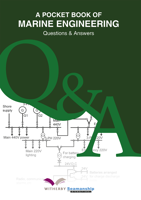Published August 2023
In a controllable pitch (CP) propeller the blades can be turned simultaneously about their own axes, which are normally perpendicular to the propeller shaft, so that the angles (or pitch) of the blade can be altered. The available range of movement normally includes astern pitch angles so that a reverse thrust can be generates without the need to change the propeller?s direction of rotation.
The first CP propellers were only capable of changing pitch when they were not rotating and under minimal hydrodynamic load. Reliability was poor and such propellers are now only used on small yachts.
CP propellers that were capable of changing pitch while rotating were developed early in the 20th century after diesel engines were introduced and CP propellers became desirable as a means of reversing ships and improving manoeuvrability. These early CP propeller designs had simple mechanical pitch setting mechanisms which were hand-operated and used mainly for trawlers and other small vessels.
Later, the first hydraulically operated CP propellers were introduced and fitted to ocean-going passenger ships.
The CP propeller hub diameters, about 30% of the total propeller diameter, were larger than the hub diameters of fixed patch (FP) propellers which were typically about 20% of propeller diameter, but this was of little significance. CP propellers proved to be sufficiently reliable to be accepted by the Classification Societies and owners, and were subsequently fitted to many coasters with diesel engines to improve manoeuvrability.
After World War II interest in CP propellers increased and many types of ship are now commonly equipped with them. In particular, the use of gas turbines as prime movers for fast warships led to the widespread adoption of high powered CP propellers, which provide for effective reversing and improved manoeuvrability.
CP propellers are now fitter in about 25% of all merchant ships newbuildings, and the trend is increasing although, for some applications, there is growing competition from variable speed electric propulsion motors driving FP propellers.
The latest propeller produced to date has a diameter of 11 metres. It is a three blade propeller and absorbs 15,500 bhp (11,400 kW) at the very low rotational speed of 45 rev/min.
CP propellers are in service at 50,000 bhp (equivalent to 37,000 kW) for warships and 46,000 bhp (34,000 kW) for a merchant ship





































